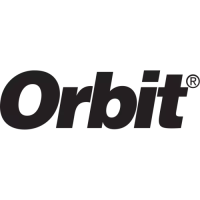
Do you have a question about the Orbit 20 and is the answer not in the manual?
| Brand | Orbit |
|---|---|
| Model | 20 |
| Category | Card Reader |
| Language | English |
Using the Orbit Reader 20 to read files from an SD card without external connections.
Connecting the Orbit Reader 20 to computers or mobile devices for screen reader use.
Details the physical layout and function of the input keys, navigation pad, and braille cells.
Explains the function of the rocker keys for navigating through text displays.
Describes the use of additional dots for capitalization and special characters in braille.
Details commands to switch between Stand-Alone and Remote operational modes.
Managing files on the SD card, including creating, viewing, copying, and deleting.
Lists commands for navigating and managing files within the File Manager.
Explains supported file formats and the need for pre-translation for certain file types.
Details commands for navigating and interacting with files while in Reader mode.
Explains the three methods available for creating or editing files within the Editor mode.
Guides on setting up the Orbit Reader 20 for compatibility with screen readers.
Explains the process of pairing the Orbit Reader 20 with host devices via Bluetooth.
Steps for connecting via USB using the Human Interface Device protocol for screen reader use.
